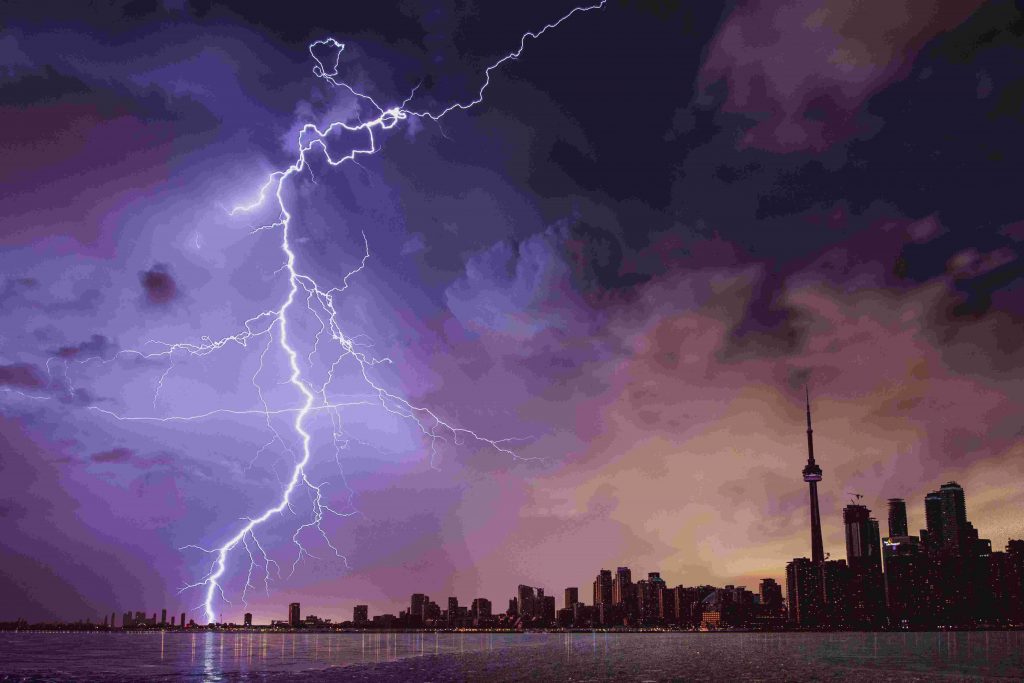When was the last time you checked a weather forecast? As a writer and, therefore, an introvert, it’s hard for me to admit this. But I’ll say it: I never paid any attention to the weather before I started writing about it for my day job. Sure, if there was a massive snowstorm on the horizon – or more relevantly, a hurricane – I’d be all over social media reading up on it.
If businesses, particularly those in the five industries listed below, follow in my footsteps, they will be in big trouble. This is because I do not own a business to make precise and timely decisions, but they do. Most important business decisions are made with the weather in mind, and if they don’t, they won’t be able to afford the consequences. Let’s explore how weather forecasts are helping businesses make better decisions.
Contents
What Are the Benefits of Weather Tools for Industries?
Weather forecast tools help businesses make better, more informed, accurate, and timely decisions. This is why: Business owners use weather forecasts to decide when they need to close their doors or reschedule an event.
For example, if you’re running an outdoor wedding venue and there’s a 70 percent chance of rain in your area on your event, you may want to postpone it until another date when the weather will be more favorable. Or maybe your company does most of its business during the winter months. Still, this year’s snowfall has been excessive—you might want to consider moving some operations inside during cold months so that employees aren’t working in freezing conditions all day long!
All kinds of weather can affect how well certain businesses operate; using a reliable historical weather API (like the one at https://www.tomorrow.io/weather-api/historical-weather-api/) allows companies like yours (and their leaders) access information about environmental hazards before making important decisions! Other professionals rely on weather forecasts every day:
- Farmers use them when planting crops
- Airlines use them while planning routes through stormy skies
- Construction crews use them while building buildings in open fields, where winds can sometimes get pretty intense

Transportation Business
Transportation companies use weather forecasts to predict demand and plan their operations. They use the forecasted temperature and precipitation levels to determine which types of vehicles they will need, where they should locate the cars to meet demand, and how many drivers they should have on duty at any given time. Whether or not they must hire extra personnel (such as additional drivers) just in case, there is an unusually high number of people looking for rides.
Forecasted temperature and precipitation levels also tell transportation companies when it’s safe or unsafe for certain types of vehicles (e.g., buses) to operate on specific roads due to potential road conditions such as ice on bridges or slushy patches on highways during winter months.
For example, A company that provides shuttle services between two large cities might decide not to schedule shuttles when temperatures drop below freezing because they don’t want their drivers exposed before sunrise/after sunset hours; this decision could be based on historical data showing how often accidents occur during these hours due to high visibility issues caused by glare from snow/ice-covered roads (these accidents may result from driver fatigue).
Ski Resorts
Ski resorts use weather forecasts to decide when to open and close. If it is cold but sunny, they will open later. If it is warm but rainy, they will close early. If it is warm and sunny, they will open early so that more people come to ski on their slopes. Ski resorts also use weather forecasts in their advertising campaigns.
For example: if there is a lot of snow or suitable temperatures expected in the forecast, they might advertise on social media or in local newspapers; if not so great conditions are predicted for the next few days, then perhaps no advertisements at all!
Decisions made by ski resorts are based on previous data about how many people visit the resort during certain times of year (winter versus summer) as well as what kind of weather we’ve had recently—if there’s been lots of snow lately, then everyone wants to ski right now!
Outdoor Restaurants
The weather forecast helps restaurants, and other businesses predict the number of customers they will have on a given day. If it is going to rain, people will avoid eating outdoors and not eat at all if they have an indoor option. This can affect their business in a big way!
If you work at one of these establishments, you know how important it is to keep an eye on the forecast to make intelligent decisions about staffing levels, menu items, and more. On top of all that, weather forecasting helps everyone in general because knowing what type of weather is coming allows us more flexibility when planning our days or weeks.
Insurance Industry
The insurance industry relies heavily on weather forecasts to determine payouts and premiums. For example, it’s easier to predict a high number of claims in the event of extreme weather, such as hurricanes or tornadoes, than when the weather is milder. If you want to be an insurance agent and make sure you’re getting paid appropriately for your services, then you must stay on top of what kind of forecast sites are being used by your clients.
On the flip side, there are cases where people try to claim money from their insurance companies even though they don’t actually need it—and sometimes, they’ll even fake injuries to get more money out of their policyholders (honestly). Weather forecasters can help spot this kind of fraud because if someone tries to claim damage from one day but then claims damages from another day too (or worse: gets hurt!), then there’s probably something fishy going on!
Construction Companies
Construction companies use weather forecast sites to plan and schedule their work. The quality of their work can be affected by the weather, as can how much work they get. It can also affect how much they charge for their services. If there is inclement weather, construction companies might be unable to complete all the tasks they need to complete in time or at all! So should these companies plan for the worst? How should they prepare for this possibility? Should they plan weeks? Days in advance? Hours in advance?
There are many factors involved when deciding whether or not it’s safe to go outside—and just because it’s sunny out doesn’t necessarily mean it’s safe out there! Environment Canada warns us about extreme cold warnings and heat alerts, but what about smog levels (which typically only hit critical levels during temperatures exceeding 30 degrees Celsius) or UV radiation (which depends on season)? Or allergens like pollen counts or mold spores can vary significantly depending on temperature changes between spring/fall seasons vs. winters.”
Conclusion
Companies in these five industries alter their business plans based on the weather forecast. Weather forecast tools can help companies make better decisions. They allow businesses to make decisions faster, with less risk, lower cost, and less effort.
The decisions made by businesses that rely on accurate weather forecasts can impact the daily lives of thousands, if not millions, of people. The ideas in this article are just a few examples of how weather can influence the world around us on such a large scale—and these are only the industries that have an obvious stake in keeping track of what’s happening in our atmosphere.
So, as exciting and fresh as it might be to see a beautiful snowfall outside your window or watch an intense lightning storm from afar, remember that many people depend on consistent and accurate predictions about our planet’s constantly changing weather patterns.



